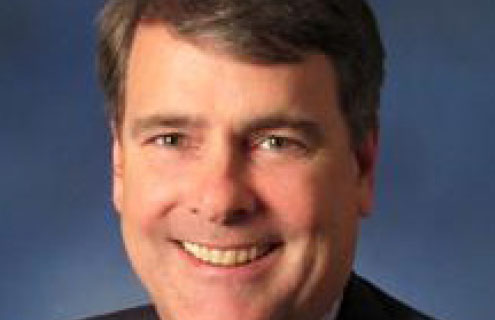The programme does two things: firstly, it may cap off volatility on a catastrophic basis, through excess reinsurance for any number of risks, including property, casualty and cyber. Secondly, it may have a stop-loss feature, which is a cross-class aggregate, that can cap the frequency of severity in the risks the captive retains.
What does Zurich’s aggregate stop-loss programme offer to captives?
The programme does two things: firstly, it may cap off volatility on a catastrophic basis, through excess reinsurance for any number of risks, including property, casualty and cyber. Secondly, it may have a stop-loss feature, which is a cross-class aggregate, that can cap the frequency of severity in the risks the captive retains. This second feature provides the captive manager with greater certainty in the captive’s worst year.
What do you mean by ‘worst year’?
The worst year could be if the captive had a loss frequency or severity issue. The stop-loss capability of the programme would deliver certainty to the financial performance of the captive. It’s not unlike what a general insurance company would do with reinsurance to manage its catastrophe exposure and reduce the volatility in its portfolio.
How important is that certainty to captive managers?
I think the last thing a risk manager wants to do is to have to go to the CFO and request more cash to cover the kind of event we’re talking about. Captives are funded by their parents with surplus, and that surplus needs to be balanced with the risks that are taken on. It’s tantamount to dipping into your savings—that capital really should be safe and sound and not subject to tremendous amounts of pressure.
How much of this pressure on capital would you say is regulatory driven?
With Solvency II being implemented in Europe at the beginning of 2016, more pressure is being applied to a captive’s capital. Captive managers, who are not financial professionals but risk managers first and foremost, want to know how their captives are going to handle surplus in terms of insurance cover and potential risks.
They are looking at the potential for bolstering frequency of loss or severity as a means of meeting capital requirements. More and more, they are looking at multi-line, multi-year integrated risk programmes to cap off the worst day, which in turn alleviates some the regulatory pressure.
How are captive insurers employing these programmes?
Captive managers are often being asked by their owners to find ways of putting multiple risks under one roof, so to speak, so they may look to embed their employee benefits, long-term disability and other similar coverages in the programme.
Doing this helps to minimise volatility because different non-correlated risks are being brought in to the captive, and at the same time, there may be some capital relief under provisions of Solvency II because they are non-correlated risks.
What about emerging risks?
I think captive managers are being called upon to look at risks beyond the typical exposures and consider what the parent organisation is facing, be it cyber, brand or reputational. It could also depend on the segment. A utility, for example, may face entirely different exposures than say a manufacturer.
The captive needs to determine what risks are appropriate to reinsure and whether to retain them or to look for a retrocessional reinsurer to spread the risk. Stop-loss programmes can be adapted to deal with these divergent risk needs.
With more emerging risks, such as a serious cyber attack, an organisation may dismiss the notion of purchasing hundreds of millions of dollars of coverage because it’s a rare event. Instead, it makes sense to put that risk into a captive, so that the organisation can finance that potentially sizeable loss if and when it happens. But when you introduce emerging risks into a captive, you introduce more volatility.
Therefore, giving the captive a large amount of net capacity and a large limit could act as a stabiliser in the event of a very low probability but high severity catastrophe. This is where these programmes can really function through the stop-loss feature, which ringfences some of those risks being put into the captive.
This is intended as a general description of certain types of insurance and services available to qualified customers through the companies of Zurich in North America, provided solely for informational purposes. Nothing herein should be construed as a solicitation, offer, advice, recommendation, or any other service with regard to any type of insurance product underwritten by individual member companies of Zurich in North America, including Zurich American Insurance Company, 1400 American Lane, Schaumburg, IL 60196. Your policy is the contract that specifically and fully describes your coverage, terms and conditions. The description of the policy provisions gives a broad overview of coverages and does not revise or amend the policy. Coverages and rates are subject to individual insured meeting our underwriting qualifications and product availability in applicable states. Some coverages may be written on a nonadmitted basis through licensed surplus lines brokers. © 2015 Zurich American Insurance Company.





